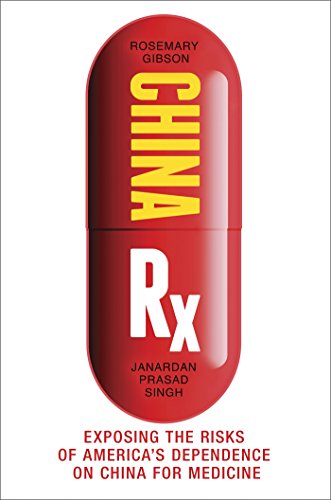The New Warfare: Rethinking the Industrial Base for National Defense and Security
The strategic shift from the Middle East wars to the question of 21stcentury global conflict among the core global powers is occurring in the context of a thirty-year process of globalization.
This means that the classic understanding of national or allied defense industrial bases has been turned on its head as global sourcing has created a very new situation in which the challenge is to actual know what are the critical processes and capabilities to have under national control in times of conflict or crises where global supply chains are disrupted or shut down.
What does it mean to have a nation and its military or security forces sustained through a period of crisis?
And this question is not an idle one for since the PRC has joined the WTO, it has pursued a deliberate policy of leveraging globalization to position itself for strategic dominance.
This has not happened simply by the Chinese pursuing what one might call a distorted (for a Western point of view) or a directed globalization strategy.
They have been added by the enthusiastic support of Western politicians, industrialists and publics who have seen lower costs at home and profits abroad as the sine qua non of economic development.
As Western business schools churned out a generation of theorists who focused on lean supply chains, and focusing on core value of a firm which meant getting rid of organic supply capabilities within a firm, Chinese Inc. was only too willing to define itself as the supplier of choice for the West.
The only small problem is that the PRC is not capitalist and the PRC leaders have a global strategy, which relies on distorted globalization to gain strategic advantage.
As Ross Babbage, the noted Australian strategist, underscored in his recently published report on political warfare:
“China’s very large economy and the authority of the Party within it gives Beijing extensive scope to persuade, bribe, and coerce national and regional governments to accept large infrastructure developments and other Chinese involvements within their societies. China Inc. can afford to purchase key foreign enterprises, offer funding for uneconomic infrastructure projects, and heavily subsidize the entry of Chinese corporations into strategically important markets, even within strong Western societies. This provides Beijing with strategic positioning options that Moscow cannot afford and is not well structured to undertake.”1
In their ground-breaking book, China Rx: Exposing the Risks of America’s Dependence on China for Medicine, Rosemary Gibson and Janardan Prasad Singh provide significant insights into how distorted globalization has put the United States and the Western world into a situation of dependency which clearly provides tools for the Chinese leadership in a future crisis.
They described the strategic shift from pharmaceutical leadership to dependence on Chinese production as follows:
In the 1990s, the United States, Europe, and Japan manufactured 90 percent of the global supply of the key ingredients for the world’s medicines and vitamins.
Now, China is the largest global supplier. American dependence on China for the active ingredients in many medicines is so significant that a headline in a 2012 pharmaceutical industry newsletter, FiercePharma, blared, “Dangers Aside, Drugmakers Can’t Live without Chinese Active Ingredients.”2
This shift provides the grounds for concern either through disruption of the supply chain by design or not on the Chinese part.
The centralization of the global supply for essential ingredients for drugs in China makes it vulnerable to interruption, whether by mistake or design.
If disruptions occur for an essential ingredient made in China, the United States will wait in line along with Europe, India, and other countries to obtain it. If a global public health crisis occurs,
China will likely keep its domestically produced medicines at home and stockpile them to secure access for its citizens before seeing to the needs of other nations.3
You don’t have to be a genius to then focus on what this means not only for civil society but the military as well.
While there has been much focus on the potential threat of bioterrorism there has been virtually no focus on the US and the West putting into the hands of the Chinese, the means to cripple Western militaries in terms of medical supplies.
The book provides significant detail on how this situation has happened as well as paths to recovery.
The path to recovery requires focusing on the restoration of the supply base within the United States and the West to ensure that key elements of both the manufacturing and stockpiling chain are resident within the liberal democracies, and not dependent on the good will of a country which has clearly signalled its intentions with regard to how it is using distorted globalization to its strategic advantage.
Robert D. Atkinson, president of the Information Technology and Innovation Foundation, said during testimony at the US-China Economic and Security Review Commission,
It’s become clear that the path we thought China was going on becoming more market-oriented, more rule of law, more respectful of intellectual property—that path hasn’t emerged.
You could argue there’s significant backsliding. Not enough people understand. The old strategy was about gaining commodity production, largely in manufacturing, largely through low cost, largely through inducing US firms and others to go there. That was very successful….
The new strategy is to go after our core competencies and technology.
That’s a very different strategy.
We could have a trade balance with China tomorrow and it wouldn’t address that problem, which is going after the kinds of advanced industries in which the United States is still competitive in.
That’s the new war.4

